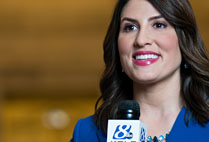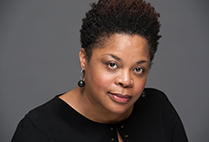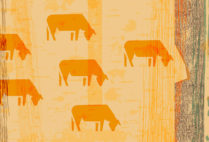Nonfiction
Accidental Brothers: The Story of Twins Exchanged at Birth and the Power of Nature and Nurture
Nancy L. Segal (CAS’73) and Yesika S. Montoya
St. Martin’s Press
This is one for the you can’t make this stuff up file: two sets of identical twins, delivered in the same Colombian hospital, get mixed up by the staff. The pairs are switched: Jorge is sent home with Carlos instead of with his real brother, William, who goes home with Carlos’ true brother, Wilber. For the next 25 years, each set, assumed by themselves and their families to be fraternal twins (who, unlike identical twins, don’t completely share the same genes or look completely alike), live their lives blind to the truth.

The mistake came to light in 2013, when a young woman mistook William for Jorge, his true, identical twin. In Accidental Brothers, Segal and Montoya tell the story of the mistake’s discovery—the shock, the first meetings of the biological brothers—and of its impact as the families processed the unanswerable questions of what might have been. Jorge and Carlos grew up in bustling, big-city Bogotá, while William and Wilber lived in the rural village of La Paz, 150 miles and a lifestyle away. What opportunities were gained, or lost, by each because of the swap?
The mix-up also affords Segal, a professor of developmental psychology and founding director of the Twin Studies Center at California State University, Fullerton, and psychologist Montoya the chance to explore a unique case study of nature versus nurture in developing humans.
Ultimately, this book is about accepting the life cards you’re dealt, and of love regardless of biology. As Wilber, calm and clear-headed, told William, with whom fate mistakenly paired him, “So we were swapped. I don’t care who they are. You’re my brother, and you’ll be my brother until the day I die.”—Rich Barlow
Astral Weeks: A Secret History of 1968
Ryan H. Walsh (COM’01)
Penguin Press
Van Morrison’s one-of-a-kind masterpiece, Astral Weeks, took shape during a few months when the Irish singer-songwriter lived in Cambridge, Mass., in the late sixties, although the album was recorded in New York. In Astral Weeks: A Secret History of 1968, musician and journalist Walsh uses Morrison as a wedge to crack open a tumultuous decade in Boston, one that saw folkie Mel Lyman’s creation of the cultish Fort Hill Community, the rise of rock-radio colossus WBCN, and a psychedelic drug experiment in the basement of BU’s Marsh Chapel.

Morrison may be a genius, but in ’68 he was also an overwhelmed and temperamental artist in his early 20s, known mainly for the pop hit “Brown Eyed Girl,” and fleeing a mob-run record label with his wife at the time, Janet Planet. Walsh, who first fell for Astral Weeks decades later as a College of Communication senior with a broken heart, has done plenty of shoe-leather reporting on Morrison’s time in Boston. He also searches for a rock Holy Grail: a bootleg recording of Morrison performing Astral Weeks songs at a basement club on Boylston Street.
The book visits places such as the then-untamed Harvard Square, where a chance meeting with Lou Reed changed the life of teenager—and later Modern Lovers founder—Jonathan Richman, and where Fort Hill members handed out their countercultural newspaper, Avatar. The supporting cast includes Club 47 folk fans, Tony Curtis, James Taylor, James Brown, Steve McQueen, and Mayor Kevin White (Hon.’74). Along the way, Walsh describes a fundamental conflict, not between youth culture and the establishment, but between the artistic impulse and the quest for power and profit.
BU is a frequent presence in the book. Famous folk musician and Fort Hill member Jim Kweskin discovered jug band music before dropping out of the College of Fine Arts, and Don Law (CGS’64, CAS’68) became the city’s biggest rock promoter. Faculty members Howard Zinn and Frederick Wiseman appear, embroiled in controversy, and the assassination of Martin Luther King, Jr. (GRS’55, Hon.’59) is a turning point. Marsh Chapel also makes several appearances, including as the place where Timothy Leary gave psilocybin to divinity students in 1962 in hopes of linking psychedelic and religious experiences.
—Joel Brown
Book Briefs
From Tales of Apollo 14 to a Meditation on Jewish Identity
After graduating from BU, Don Eyles (CAS’66) took a job as a computer engineer at MIT’s Instrumentation Laboratory (later renamed the Charles Stark Draper Laboratory), where he worked on the guidance computer for NASA’s Apollo missions. In Sunburst and Luminary: An Apollo Memoir (Fort Point Press, 2018), he lends his personal insight to the quest to land people on the moon. Eyles was assigned—with no formal training—to work on programming the lunar landing phase of the guidance system, and he gained transient fame by overriding a faulty abort switch on the Apollo 14 mission at the last minute with some quick programming (prompting a 1971 Rolling Stone article about him). He balances technical descriptions of his work with kooky accounts of the lab and his coworkers, and of his coming of age in Boston in the 1960s and early ’70s.
In Idiophone (Coffee House Press, 2018), a winding, deeply contemplative essay that reads like a series of prose poems, Amy Fusselman (GRS’89) ruminates on life experiences and hardships—raising a family, writing, alcoholism—through the lenses of art, music, and dance. When considering her relationship with her mother, and her own role as a mother, she attempts to reconcile imagery from a musical staple of childhood, The Nutcracker, with the realities of adulthood: in whimsical passages, she reimagines the mice of the ballet as instigators of her mother’s vices. At one point, she asks of the ballet, “How bold is a work of art that doesn’t tie it all up neatly at the end—that does something, abandons it, and moves on to something better?” Fusselman is similarly bold in her latest work.
Barbara Riiff Davis (COM’83) traveled the world as a showgirl and craps dealer in the mid-1940s and ’50s. In her memoir, Craps & the Showgirl (LeRue Press, 2017), she tells the lively—and frequently eccentric—stories from an unusual career. Riiff Davis writes that she was “born crooked”—she had to wear leg braces throughout her childhood—but later overcame her self-consciousness to become a showgirl, starting with a dance audition for a special stateside production of Folies Bergère of 1944. Riiff Davis’ stories are cinematic and gripping.
The poems in The Lynching of Leo Frank (Big Table Publishing, 2017) by Zvi A. Sesling (COM’66), written over 30 years, meditate on aspects of Jewish identity—culture, adversity, tradition. The collection’s titular poem lyrically tells the account of Leo Frank, a superintendent of a Georgia pencil factory who was hastily convicted of the murder of Mary Phagan, a 13-year-old worker there. In 1915, Frank was kidnapped from prison and lynched; in 1986, he was granted a posthumous pardon. With sobering language, the poems evoke the author’s struggle to reconcile his Jewish identity with the hardships Jews have faced historically.—Mara Sassoon



















































Have you reviewed already Jim Haskell’s Two Tents, 26 years of discovery on the Appalachian Trail?
He was a BU grad and the book is terrific…Our son Matthew G. L. Barkley graduated from BU in 1997…bicycling is part of the story in Two Tents: short-term hiking requires constant connections with parking car, riding bike to end point, etc.
Fascinating story by Jim Haskill: would you like my book review of it?